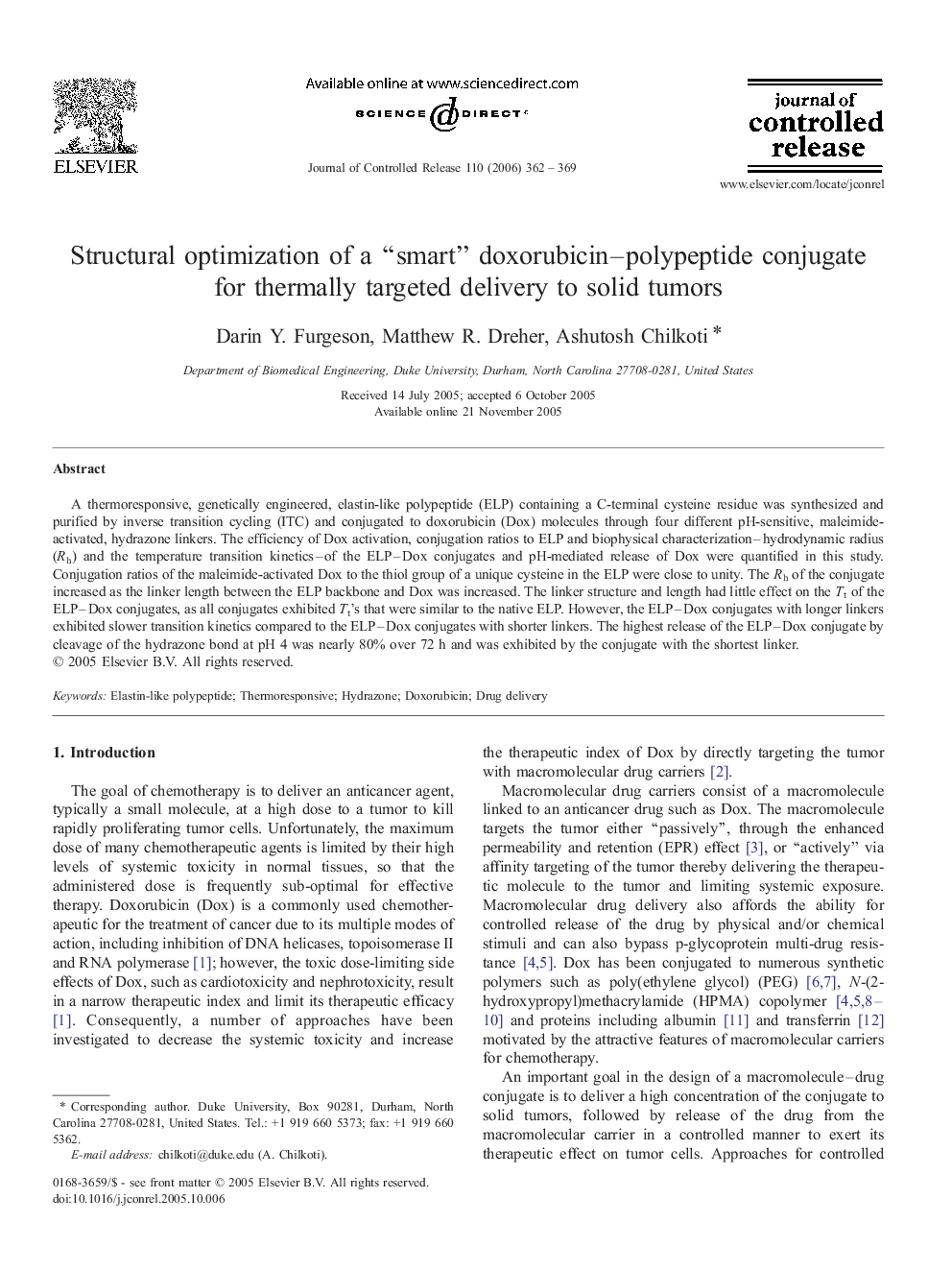| Article ID | Journal | Published Year | Pages | File Type |
|---|---|---|---|---|
| 1427738 | Journal of Controlled Release | 2006 | 8 Pages |
A thermoresponsive, genetically engineered, elastin-like polypeptide (ELP) containing a C-terminal cysteine residue was synthesized and purified by inverse transition cycling (ITC) and conjugated to doxorubicin (Dox) molecules through four different pH-sensitive, maleimide-activated, hydrazone linkers. The efficiency of Dox activation, conjugation ratios to ELP and biophysical characterization–hydrodynamic radius (Rh) and the temperature transition kinetics–of the ELP–Dox conjugates and pH-mediated release of Dox were quantified in this study. Conjugation ratios of the maleimide-activated Dox to the thiol group of a unique cysteine in the ELP were close to unity. The Rh of the conjugate increased as the linker length between the ELP backbone and Dox was increased. The linker structure and length had little effect on the Tt of the ELP–Dox conjugates, as all conjugates exhibited Tt's that were similar to the native ELP. However, the ELP–Dox conjugates with longer linkers exhibited slower transition kinetics compared to the ELP–Dox conjugates with shorter linkers. The highest release of the ELP–Dox conjugate by cleavage of the hydrazone bond at pH 4 was nearly 80% over 72 h and was exhibited by the conjugate with the shortest linker.
